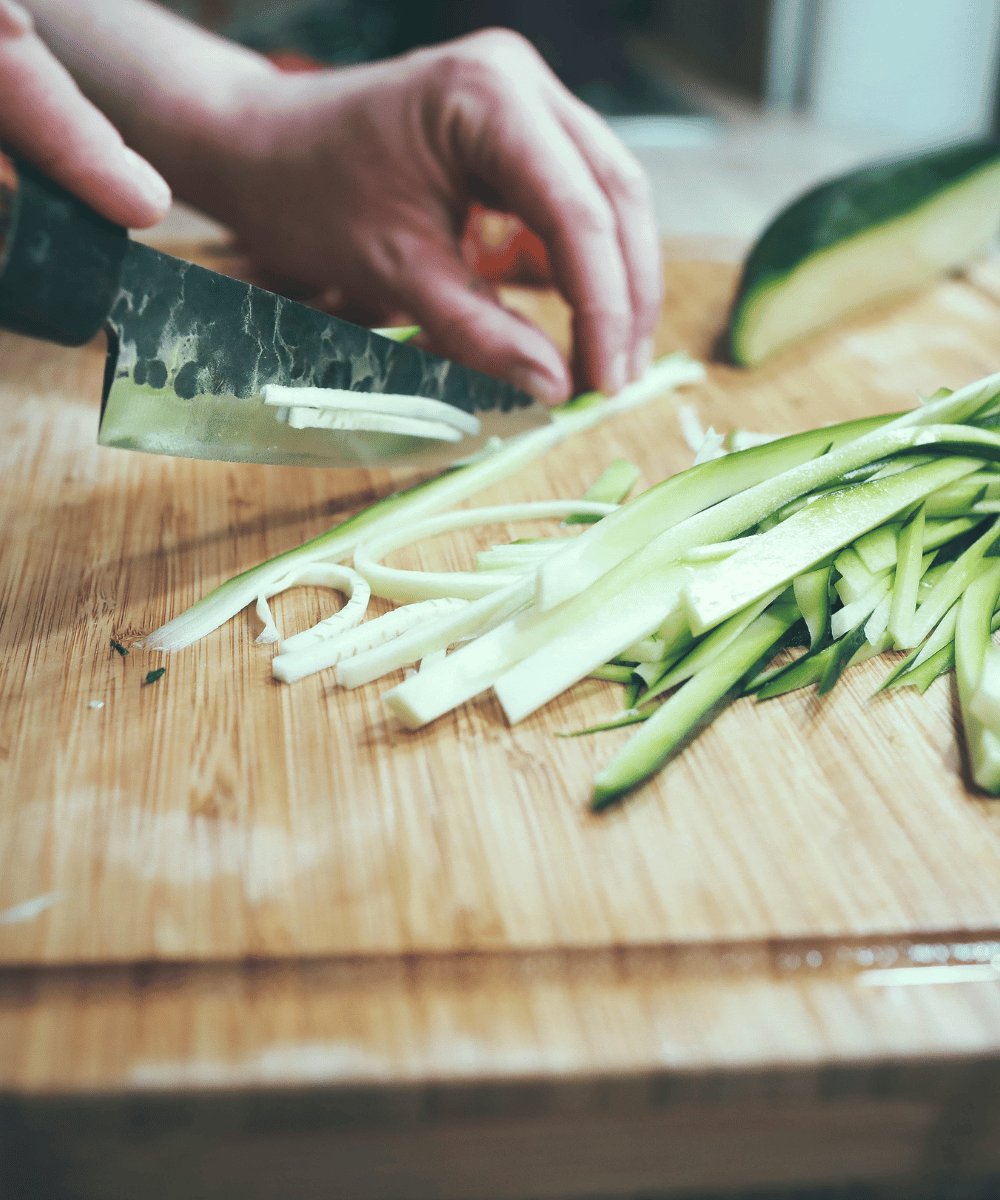Knife safety is an essential skill for anyone working in the kitchen, whether you’re a professional chef or a home cook preparing a meal for your family. Accidents with knives can lead to serious injuries, so it’s crucial to understand the principles of safe knife handling. In this blog post, we’ll cover essential knife safety guidelines, the benefits of using cut resistant gloves, maintaining a safe cutting environment, handling specialty cutting tasks, and what to do in case of a knife injury. By following these guidelines, you can ensure a safer and more enjoyable cooking experience.
Key Takeaways
- Adhere to essential knife safety guidelines, use sharp knives and select the right ones for each task.
- Use cut resistant gloves for extra protection against cuts and punctures. Consider factors such as material composition, thickness, weight & size when choosing them.
- In case of a knife injury recognize when medical attention is needed and treat minor & deep cuts accordingly.
Essential Knife Safety Guidelines
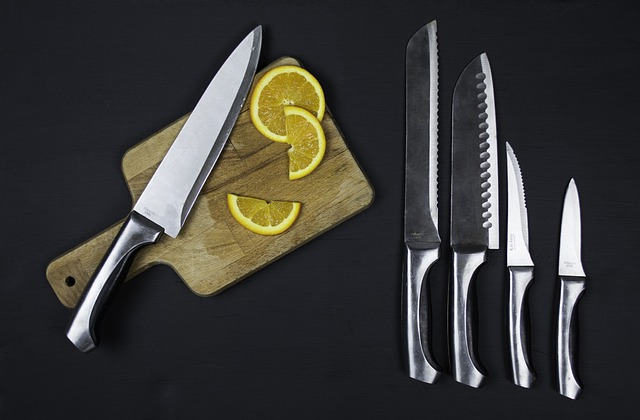
Grasping knife safety fundamentals helps avoid accidents in the kitchen. Maintaining sharp knives, choosing the right ones, and mastering correct cutting methods are critical to safety and efficiency while cutting. We’ll now detail these important principles.
Using a Sharp Knife
A dull knife not only makes the cutting process more difficult but also poses a higher risk of injury. When a knife is dull, it requires more force to cut through ingredients, increasing the likelihood of slipping and causing an accident. Ensure you regularly sharpen your knives and employ correct cutting methods to extend their lifespan.
When slicing through tougher ingredients, such as meat or dense vegetables, maintaining a blade angle of 20 degrees on either side can improve cutting efficiency. For softer ingredients, like avocados, use a gentle scoring technique and a large spoon to scoop out the contents. Remember to clean your knives with soapy water after each use to prevent cross-contamination and maintain a secure grip.
Selecting the Appropriate Knife
Selecting the correct knife for each task is key to safe and efficient operation. There are various types of knives available, each with its own specific use, such as:
- Chef’s knife
- Santoku knife
- Utility knife
- Bread knife
- Boning knife
- Paring knife
- Carving knife
- Kitchen shears
The size and material of the knife also play a significant role in its performance. Smaller knives are ideal for tasks requiring intricate and delicate cuts, while larger knives are more suitable for tasks that demand strength and control. Choosing the right knife for each task helps achieve the desired results and reduces injury risk.
Proper Cutting Techniques
Employing correct cutting methods is key to minimizing injury risk and enhancing the quality of your cuts. One technique to ensure safety when cutting rounded fruits and vegetables is the “claw grip,” in which you form an arch with your thumb on one side of the food and your forefinger on the other while placing your other hand over the top of the knife.
Maintaining cleanliness of your knife also aids in ensuring a firm grip. Food residue can make a knife handle slippery, increasing the risk of accidents. Be sure to wash your knives with soapy water after each use and dry them thoroughly to prevent moisture buildup, which can lead to corrosion and reduced longevity.
Cut Resistant Gloves and Their Benefits
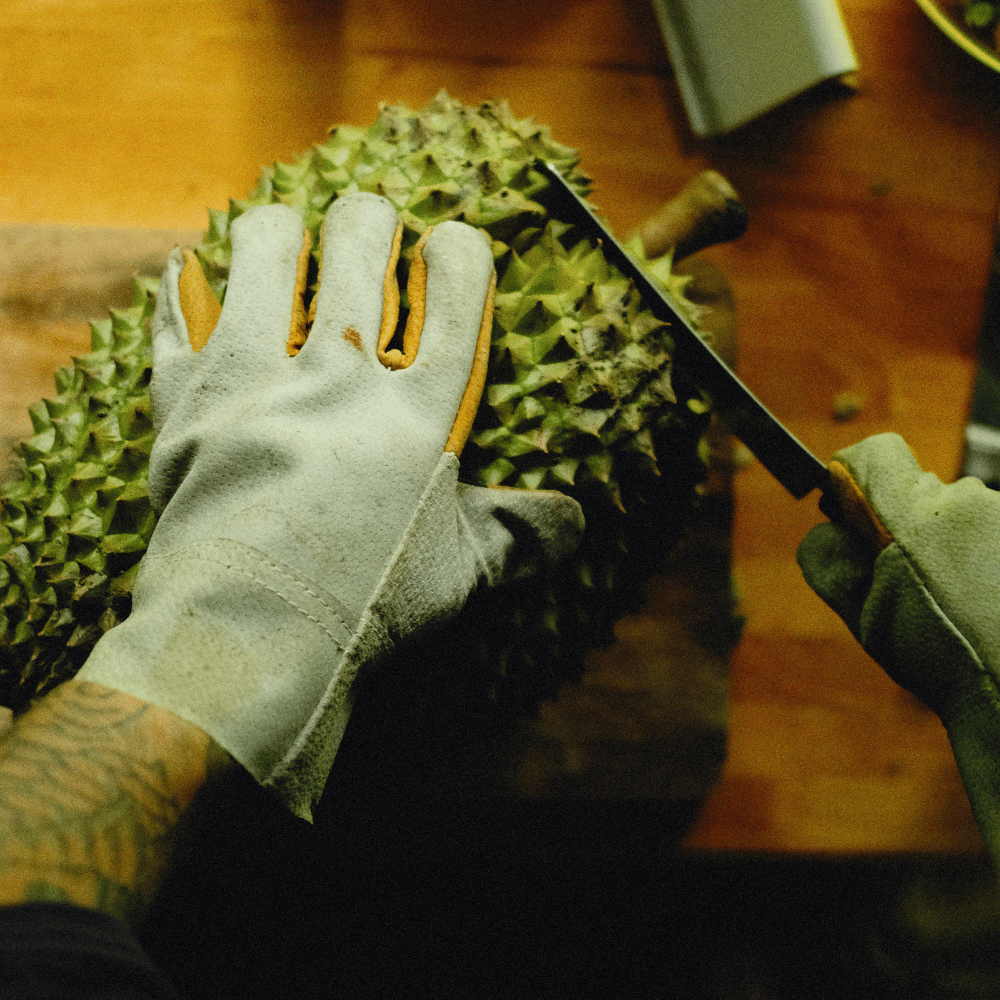
Even with proper knife safety practices, cut resistant gloves offer an additional safety layer against injuries. These gloves are designed to reduce the risk of cuts when working with sharp objects like knives, making them a valuable addition to your kitchen safety arsenal.
We’ll now examine various cut resistant gloves and guide you on selecting the best fit for your needs.
Types of Cut Resistant Gloves
There are several types of cut resistant gloves available, including:
- Metal mesh gloves: commonly used in industries like food processing, textile cutting, sheet metal work, and glass handling, offering protection from cuts and punctures caused by sharp objects
- Composite yarn gloves: made from a combination of materials like Kevlar, fiberglass, and stainless steel, providing excellent cut resistance
- High strength fiber gloves: made from materials like Dyneema or Spectra, offering superior cut resistance and dexterity
Composite yarn gloves, which incorporate materials like Kevlar® or stainless steel, provide a strong barrier against cuts and punctures while maintaining comfort and dexterity for the wearer. These knit gloves ensure both safety and flexibility in various work environments, offering knuckle protection as well. In addition to these features, leather gloves can also be considered for their durability and comfort.
High strength fiber gloves offer numerous advantages, including:
- Protection against cuts and lacerations
- Durability
- Flexibility
- Improved touch sensitivity
These gloves also provide moisture absorption and perspiration control for added comfort, making them an excellent choice for various kitchen tasks, including wiping surfaces with a damp cloth.
How to Choose the Right Cut Resistant Gloves
When selecting cut resistant gloves, consider factors such as the material composition, thickness, and weight of the glove. Common materials used in cut resistant gloves include synthetic fibers like polyamide, aramid fibers, high-performance polyethylene (HPPE), stainless steel, and glass fiber. While glove size doesn’t directly correlate to cut resistance and safety, wearing the correct size is essential for comfort and dexterity, which can enhance grip and control.
Some highly recommended cut resistant gloves for kitchen tasks include the NoCry Cut Resistant Gloves, DEX FIT Cut Resistant Gloves, and Dowellife Cut Resistant Gloves. These gloves provide excellent protection while allowing you to maintain control and precision during your cutting tasks.
Maintaining a Safe Cutting Environment
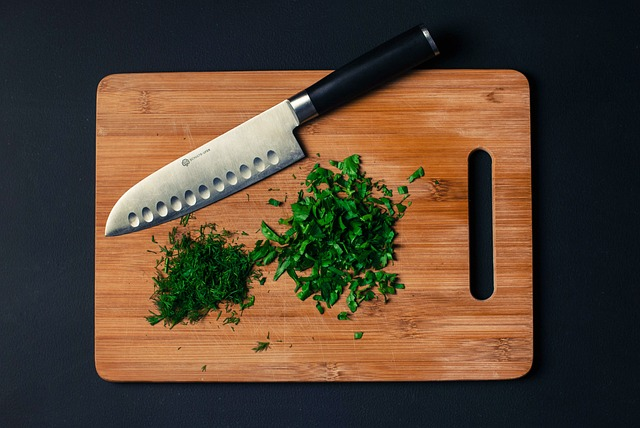
Cultivating a safe cutting environment is vital to prevent accidents and facilitate a seamless cooking experience. Securing your cutting board, keeping knives clean, and storing them safely are all crucial steps in maintaining a safe cutting environment.
We’ll now examine these practices more thoroughly.
Securing Your Cutting Board
Having a flat and stable cutting surface is key to safe and efficient cutting. To secure your cutting board on a flat surface, you can use rubber bumpers or pads underneath the board’s flat side or place a kitchen towel, cloth, or damp paper towel beneath it to provide traction and prevent slipping.
Commercial products like non-slip mats, cutting board stabilizers, and commercial-grade cutting board mats are also available for added security. By ensuring your cutting board remains in place during use, you can reduce the risk of accidents and cuts.
Keeping Knives Clean
Maintaining clean knives is key to safety and hygiene. Proper cleaning of kitchen knives includes washing them by hand with dish soap and water, using a soft sponge to gently scrub the blade, and avoiding abrasive tools like steel wool. Although some knives may be dishwasher safe, it is still recommended to hand wash them for optimal care. Furthermore, knives should be dried immediately after washing to prevent rust and corrosion.
Clean knives not only help prevent cross-contamination between ingredients but also ensure a secure grip during use. By maintaining clean knives, you can reduce the risk of accidents and ensure a more sanitary cooking environment.
Storing Knives Safely
Storing knives correctly is vital to avoid accidents and maintain their condition. Safe storage methods include:
- Utilizing a magnetic knife strip or a cork-lined knife holder
- Employing a knife block or a magnetic knife stand
- If storing in a drawer, utilizing plastic knife edge guards to protect the blades
By storing knives safely, you can protect the blades from accidental contact with other utensils, reducing the risk of nicks and dulling. Additionally, proper storage prevents exposure to moisture and humidity, which can lead to corrosion and rust on the blade.
Handling Specialty Cutting Tasks

Occasionally, you might face cutting tasks necessitating specialized techniques or tools, like slicing meat, cutting round fruits and vegetables, or carving pumpkins. By mastering these specialty cutting tasks, you can ensure a safer and more efficient cooking experience.
Slicing Meat Safely
For meat slicing, a sharp knife and correct methods are indispensable to prevent injuries and guarantee neat, precise cuts. To slice meat safely, it’s important to:
- Cut against the grain, slicing perpendicular to the muscle fibers of the meat.
- Thinner cuts can be achieved with a pull cut motion rather than pushing the knife.
- For frozen meat, use a durable, serrated saw or a sharp kitchen knife.
Wearing cut-resistant gloves can further reduce the risk of injury during meat slicing, providing essential cut protection. By adopting these safety measures, you can confidently slice meat without the fear of accidents.
Cutting Rounded Fruits and Vegetables
The task of cutting rounded fruits and vegetables can be tricky and potentially risky because they tend to roll or slip on the cutting board. To minimize this risk, use a non-slip cutting board or damp towel to ensure the fruit or vegetable remains secure while cutting.
Selecting the appropriate knife for the task is also crucial for safe cutting. Some excellent choices for cutting rounded fruits and vegetables are:
- Gyuto knife
- Santoku knife
- Nakiri knife
- Utility knife
By following these guidelines, you can safely and efficiently cut rounded fruits and vegetables without risking injury.
Carving Pumpkins and Other Seasonal Items
While carving pumpkins and other seasonal items can be enjoyable and creative, safety must be prioritized when handling sharp tools. A pumpkin carving kit is recommended for this task. The kit should include a small, serrated knife without a sharp point..
To ensure safety during pumpkin carving, follow these guidelines:
- Work in a clean, dry, and well-lit area to avoid slippage of the pumpkin or the knife.
- Make sure the pumpkin is dry to prevent hand and knife slippage.
- Thoroughly wash and dry all tools, including the knife, carving tools, and cutting surface.
- Adult supervision is always necessary, particularly when children are participating in pumpkin carving.
What to Do in Case of a Knife Injury
Despite our best efforts to practice knife safety, accidents can still happen. Knowing how to respond in case of a knife injury can make all the difference in terms of recovery and preventing complications. In this section, we will discuss how to treat minor cuts, manage deep cuts, and recognize when to seek urgent care.
Treating Minor Cuts
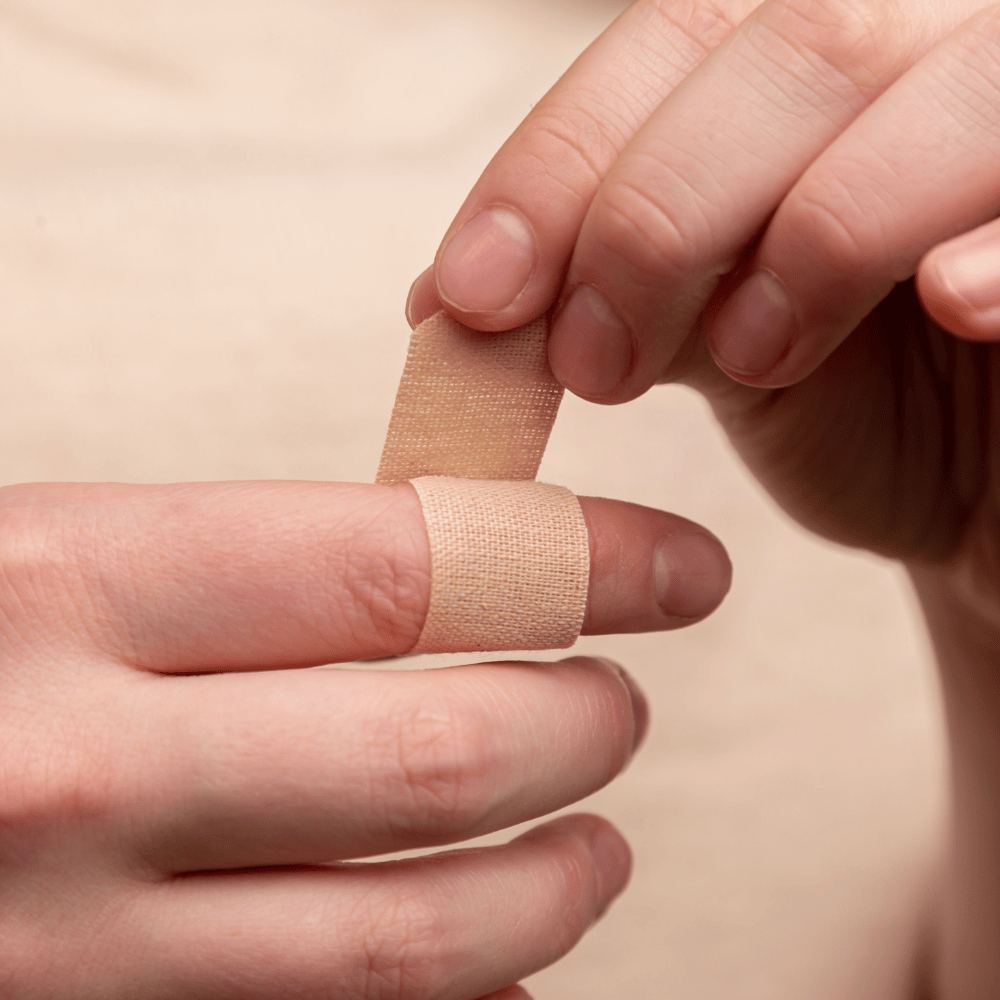
If you get a minor cut, immediate action is necessary to ward off infection and facilitate healing. Here are the steps to follow:
- Apply direct pressure to the cut with a clean cloth, tissue, or piece of gauze until the bleeding stops.
- Once the bleeding has stopped, clean the cut using soap and water to make sure any dirt or debris around the wound is removed.
- Apply an antibiotic cream such as NEOSPORIN or Bacitracin to help prevent infection.
- Cover the cut with a bandage to keep it clean and protected.
For painful cuts, over-the-counter medications like acetaminophen can help alleviate pain. By following these steps, you can effectively treat minor cuts and prevent complications.
Managing Deep Cuts
Deep cuts demand urgent attention and might require professional medical assistance. In the case of a deep cut, your first priority should be to stop the bleeding by applying direct pressure on the cut with a clean cloth, tissue, or piece of gauze. If the bleeding does not stop or the wound is particularly deep, contact emergency services.
Once the bleeding has stopped, follow these steps to care for the cut:
- Rinse the cut with cool water.
- Gently clean the surrounding skin with mild soap and a soft cloth.
- Dress the wound with an adhesive bandage, such as a strip bandage or knuckle bandage, to provide protection and support for the affected area.
After taking these initial steps, seek medical attention to ensure proper treatment and prevent complications.
Recognizing When to Seek Urgent Care
Some knife injuries necessitate immediate medical attention or urgent care. A cut should be considered an emergency if it is deep, penetrates the muscle or fat layer of the body, or occurs in sensitive areas like the face or hands. Additionally, if a cut is dirty or if there is excessive bleeding that cannot be controlled with direct pressure, seek professional medical help.
Other indications that a cut requires urgent care include persistent bleeding despite applying pressure for 15 minutes, impaired mobility in the affected finger, or numbness in the pointer finger after the cut. By recognizing when to seek urgent care, you can ensure the best possible outcome and prevent long-term complications.
Summary
In conclusion, knife safety is an essential skill for anyone working in the kitchen. By understanding the basics of knife safety, using cut resistant gloves, maintaining a safe cutting environment, and handling specialty cutting tasks with care, you can significantly reduce the risk of accidents and injuries. In the event of a knife injury, knowing how to respond and when to seek urgent care can make all the difference. Remember, practicing knife safety is not only about protecting yourself but also about ensuring a more enjoyable and efficient cooking experience.
Frequently Asked Questions
What are 4 safety rules when using a knife?
Always carry knives with the blade pointed downward, use them only for cutting food, keep them sharp and do not try to catch a falling knife - these are four important safety rules when using a knife.
What are the best cut resistant gloves?
The best cut resistant gloves are the NoCry Cut Resistant Gloves for overall performance, DEX FIT Cut Resistant Gloves for versatility, Dowellife Cut Resistant Gloves for protection, Stark Safe Cut Resistant Gloves for kitchen use, and Men Cut Resistant Gloves for dexterity.
How often should I sharpen my kitchen knives?
Sharpening your kitchen knives regularly is essential for maintaining their safety and efficiency. Aim to sharpen them every few months or when you notice a decrease in cutting performance.
Can cut resistant gloves completely prevent knife injuries?
Cut resistant gloves can help reduce the risk of knife injuries, but cannot completely prevent them.
Wearing the gloves can still lessen the severity of any possible injury.

